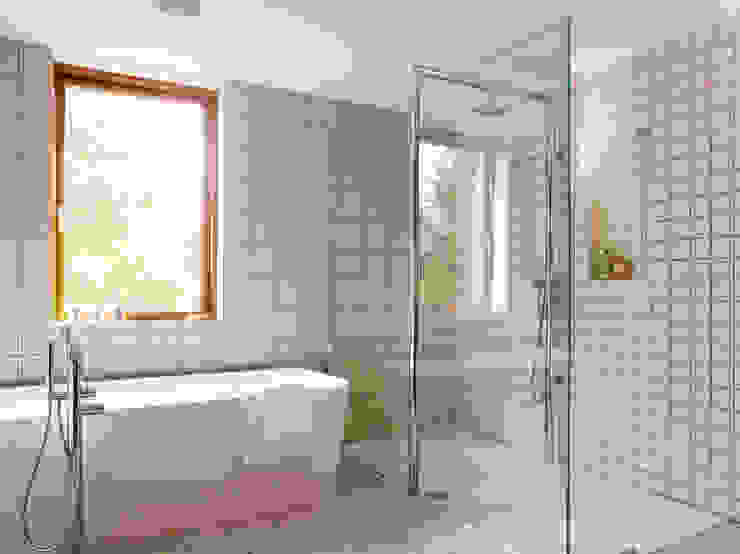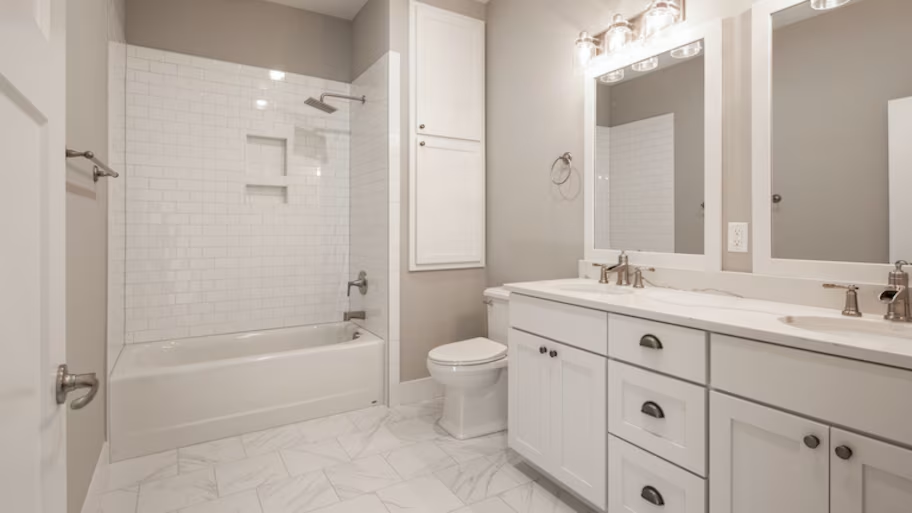How do you actually feel with regards to How to Install a One-Piece Shower Unit?

A successful shower installment needs mindful planning and also a lot of job. In many cases, you will require to do three sorts of tasks: mounting wall surfaces, setting up the plumbing, and also completing walls.
Prep work
First of all, you have to choose the sort of shower that you wish to set up. It is important to establish whether the picked shower is capable of handling particular systems and can control a safe level of water with the central heating boiler. The majority of shower units nowadays are created to be adaptable to different water pressures (such as kept warm water and cold mains).
It is also crucial to think about the water pressure and the planning of the piping and also water drainage for the shower
Different Sorts Of Shower Units
- Push-on Mixer: The hose and spray parts of the push-on mixer shower system can be linked to the bathroom faucet according to your need, and the water temperature level can be changed via the taps. Push-on mixers are cheap as well as exceptionally simple to mount. However, although the hose link is straightforward, it is easily removed. Furthermore, it is bothersome to readjust the temperature level.
- Bath/Shower Mixer: The hose pipe as well as spray of this sort of shower are combined with a bathroom mixer faucet, and the temperature level can be adjusted with the bath faucets. It is a very affordable alternative and also no additional plumbing is included. Nevertheless, the bath/shower mixers likewise experience troublesome temperature control options.
- Manual Mixer: The hose pipe and spray of a hand-operated mixer shower device belong of the wall device and also the cold and hot water supplies are connected to a solitary valve The temperature and stress of the water are controlled via either one or a selection of knobs (in much more expensive showers). Although temperature level control is much easier in manual mixer kinds, they are more pricey than the formerly discussed mixers. They additionally need additional plumbing of cold and hot water system pipes.
- Thermostatic Mixer: The pipe and spray of this shower kind are a part of the wall surface device and the cold and hot water materials are connected to a single shutoff right here too. It is total with a built-in stabiliser to self-adjust the water temperature level and to stop it from ending up being as well hot. Among the biggest benefits of a thermostatic mixer shower type consists of convenient temperature level control. However, it is one of the most costly of the different mixer choices.
- Power Shower: A power shower is a single system having a powerful electrical pump that is capable of changing both the water stress and temperature. This sort of shower can be fitted if there is supply of water from a cold water tank as well as a warm water cyndrical tube. A power shower makes the modification of both stress and also temperature simple. On the other hand, it is unsuitable for water warmed directly by the shower or where the water is supplied by a mix central heating boiler under mains pressure.
- Electric Shower: An electrical shower is plumbed right into a keys cold water supply and also it heats the water electrically. It is important to note that for this shower kind to be mounted, the keys stress requires to be at least 0.7 kg/sq cm (10lb/sq in). The system allows the temperature level and also pressure to be readjusted by means of a handle. Versions with temperature stabilisers are better as they stay untouched by various other taps somewhere else in use within the family. A significant downside of electric showers is that the control knob only allows for the choice of heats at less pressure, or lower temperature levels at a better stress. This is bothersome in the winter when the spray is typically weak as well as the keys water is colder. However, this problem is tackled in some designs which are offered with a winter/summer setting.
Technique
Depending upon the kind of shower you wish to mount, the shower head must either be fitted in order to avoid its contact with the water in the bathroom listed below or the base tray, or it needs to have a check shutoff.
Prior to starting, it is advisable to mark the placements of the shower head and also control, and also to intend the pipe-work entailed. In addition, the drain system to eliminate the drainage will certainly require to be prepared. Both positions of the cable route and also the shower button will additionally require to be thought about if an instant or electric shower device is being mounted.
Utilize the direction guide provided with the shower device to fit the shower control.Before fitting the pipes that will provide the water to the shower system, it is important to remove the water system. In order to safeguard the pipes, they need to be given a waterproof covering as well as likewise fitted with isolating shutoffs. The pipes can after that be buried into the wall and also glued over to neaten the overall appearance.
Fit the base tray, shower head, and installations.
Link the main shower control to the pipelines that will be supplying the water (This might require a women screw string adapter).
Reconnect the supply of water and also examination the pipes for any type of leakages, as some may require tightening.
If you are mounting an electrical shower, remember to turn off the electrical energy supply before making any type of electric connections. Once these links have actually been made (there must be guidance within the user's manual), the power supply can be switched back on.
Changing Water Stress to Suit Your Shower
The cold water tank can be raised to a greater elevation (sometimes as low as 150mm (6inches)) by installation a strong wood assistance under it - possibly made up of struts and also blockboards. If you select this alternative, the main as well as circulation pipelines will certainly also need to be elevated to meet the new elevation of the storage tank.
Alternatively, a booster pump (a single pump or a dual/twin pump) can be fitted. Whichever kind is chosen, it should be linked right into the power supply in order to run.
Piping as well as Drain
It is best to make use of 15mm size supply pipes, and also make the runs to the shower as short as well as straight as feasible so regarding keep optimal pressure and reduce heat loss. Furthermore, by minimising using joints for pipeline edges, you can decrease the resistance in the flow of the supply of water. You can achieve this by bending the pipes instead.
Many Usual Blunders
- Going against or ignoring local code restrictions.
- Making use of pipes that are too small.
- Attaching copper to galvanized without using a brass or dielectric fitting in between both.
- Not making use of tape or pipe compound at threaded joints.
- Not leveling your fixtures when mounting them.
- Not mounting an air void loading for components.
- Reducing supply stub outs as well brief to mount the shutoff valves onto after the ended up wall surface remains in location.
- Not correctly aligning tubing right into installations or stop valves. (Compeling the nut onto the compression ring at an angle when the tubes goes to an angle will cause a leakage.).
- When transforming the water back on in your house, always run the outdoors hose pipe valve or purge your toilets to hemorrhage dust and also air from the lines. This particles can cause problems in your sink faucets and various other plumbing trim.
How Do You Install a Shower? Follow This Guide
Installing a Shower at a Glance
- Tools & Materials: Level, electric drill, caulk, hole saw, cedar shims, shower unit
- Step 1: Drill pilot holes
- Step 2: Prep fixture holes
- Step 3: Move unit into place
- Step 4: Caulk corners and base
- Step 5: Attach door
- Step 6: Install shower pan
Whenever plumbing is involved in a DIY project, people worry about what might go wrong. The truth is that installing a shower isn’t that complicated, and you can save a lot of money by doing it yourself. You shouldn’t need to make any alterations to your plumbing to complete the job, and most of the tools you need will be provided in your new shower kit.
Can I Install a Shower Myself?
Even if you’ve never installed a shower before, you’ll find this to be a project that is perfectly suited for DIYers with a moderate level of experience. Whether you're doing a bathtub conversion or installing a new stall, most of what you need comes in shower kits that you can purchase from a hardware store. The first thing you need to do is determine what type of shower stall you want.
Single-panel stalls are the easiest to install because they come preassembled. All you need to do is put them in place. Multi-panel showers require a few additional steps, but you’ve got more control over the appearance of your unit. Multi-panel units are also much easier to handle if you’re going to do the installation without any help.
Be sure to take all appropriate safety precautions, such as wearing eye protection and gloves. When you’re removing or installing a shower unit, you might kick up debris that could hurt your eyes. You’ll also need to work with equipment that will get extremely hot, so be sure to have safety gloves handy.
Tools and Materials
- 2- to 4-foot level
- Electric drill with a 1/8-inch drill bit
- Caulk
- 2-inch hole saw
- Cedar shims
- The unit itself
Before You Begin: Prep the Space
It’s highly important to measure your space accurately before putting the stall in. Measuring from the floor upward and from each corner outward will ensure you’ve got the right measurements. What you’re looking for is where the plumbing apparatuses are going to come through the stall. Transfer these measurements over to the back of your unit by drawing the locations of these holes using a pencil or marker.
Pull out your old shower and make sure to scrape off all the old caulking. Be thorough because you want to work with smooth surfaces for the best installation. Once you’ve pulled out your existing shower, you need to make sure that the floor is clean and dry. The best way to clean debris is with a shop vacuum, as it’ll soak up water and dirt together.
If you’re experiencing any plumbing issues, such as low water pressure, this is a perfect opportunity to solve them. Make sure that the pipes themselves are not in need of patching and clean your showerhead. When you turn the water back on after your project, check the pipes for signs of wear or disrepair. Anything beyond minor repairs should be handled by a plumber, and this is the best time to bring in a professional.
If the floor has any moisture at all, don’t proceed until it’s completely dry. The last thing you need is for the floor to rot or invite mold and mildew into your base. Once everything is dry, apply waterproof wallboard to the walls. This can be attached with screws or nails, then sealed with caulk so that water doesn’t seep into any crevices.

I ran across that review on How to Build a Shower Enclosure for Your DIY Bathroom while doing a search on the search engines. Sharing is good. Helping people is fun. Thanks for your time. Kindly pay a visit to our site back soon.
Click Here
Comments on “Beginner's Step-by-step Guide to Installing a New Shower Unit”